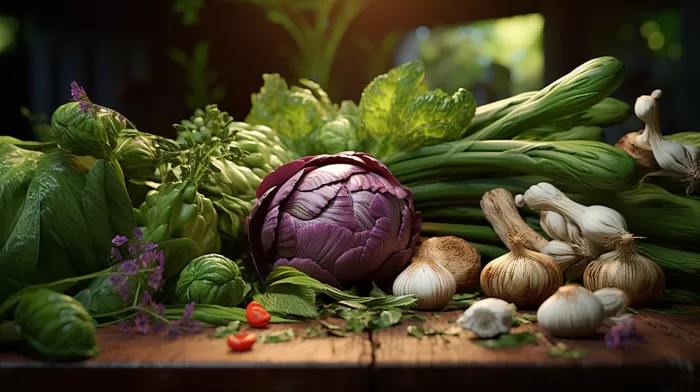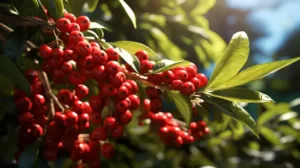A powerful bioflavonoid called luteolin, which is found naturally in plants, herbs, and vegetables, has been gathering interest within the research community in recent years. This compound shows potential as a significant player in the treatment and prevention of diseases like cancer, Alzheimer’s, multiple sclerosis, rheumatoid arthritis, cardiovascular disease, and diabetes. Although recognized as a ‘new kid’ in Western medicine, luteolin has been a part of traditional Chinese medicine (TCM) for thousands of years.
Luteolin and diet
Several studies have examined the effects of consuming luteolin through a diet high in whole foods containing the bioflavonoid. While luteolin-rich foods cannot cure cancer or other diseases, they can help prevent these conditions, slow their onset, and even reduce their severity.
Age-related inflammation in the brain is linked to a range of harmful diseases like Alzheimer’s and Multiple Sclerosis. Consuming foods high in luteolin can help decrease that inflammation and prevent its recurrence. Luteolin-rich foods also help reduce inflammation associated with rheumatoid arthritis (RA) and, due to the compound’s role in blood sugar regulation, can improve insulin sensitivity to help prevent type II diabetes.
24 Foods rich in luteolin
- Artichoke leaves
- Basil
- Beets
- Brussels sprouts
- Cauliflower
- Celeriac
- Celery
- Celery hearts (higher than celery stalk)
- Chamomile tea
- Dishcloth Gourd
- Peppers (green, jalapeno, sweet)
- Chinese Kale
- Kohlrabi
- Lemons
- Lettuce
- Olive oil
- Parsley
- Peppermint
- Rosemary
- Rutabagas
- Sage
- Spinach
- Thyme
- Water spinach
To get enough luteolin in your diet, aim to consume as many whole foods rich in the bioflavonoid as possible with every meal.
Luteolin and Traditional Chinese Medicine
Many research projects on luteolin have focused on its potential application in cancer treatment and prevention. TCM includes many herbs that contain luteolin.
However, don’t assume that taking TCM herbal formulas containing luteolin on their own will help. It may, but it may not. Rather than subscribing to the “single herb/application” model, traditional Chinese herbals are used in concert, with one formula containing several or even a dozen different herbs together, for a broader synergistic approach. The theory is that cancer is a symptom and their root causes need to be treated alongside the symptoms. It is recommended that one seek a proper “TCM pattern diagnosis” before using TCM herbals for anything.
Many Chinese herbs contain luteolin, such as Ju Hua, Ye Ju Hua, Man Jing Zi, Fu Ping, Dang Shen, Bo He, Ku Shen, Jin Yin Hua, Bai Guo, Nu Zhen Zi, Yin Yang Huo, Ban Zhi Lian, Qing Hao, Bian Xu, Shi Wei, Luo Shi Teng, Xuan Fu Hua, and Xian He Cao. Some well-known herbs and their actions include:
- Bai Guo (gingko nut): used for getting rid of phlegm and for memory issues
- Yin Yang Huo (horny goat weed): used as an aphrodisiac
- Ju Hua (chrysanthemum): usually drunk as a tea to help reduce interior body heat, aid digestion, and benefit the eyes
- Dan Shen (red sage): used in blood-building formulas for anemia, angina, and stroke
- Ban Zhi Lian (skull cap): has anti-cancer capabilities and destroys cancer cells
- Qing Hao (wormwood): a major herb for malaria treatment, extracted from Sweet Wormwood (Artemisia annua)
Final thoughts
Research indicates that while you cannot defeat a cancer tumor solely through consuming luteolin-rich foods, several Korean studies have shown that you can significantly improve your chances of preventing cancer and limiting its growth if you already have it, through incorporating luteolin-containing foods into your diet. Consulting with a TCM practitioner for herbal formulas containing luteolin, after obtaining a proper “pattern” diagnosis is another option. Regardless of the method, luteolin in its many natural forms, and perhaps its pharmaceutical forms in the near future, seems to be a promising choice for cancer prevention and treatment, as well as for reducing age-related inflammation-induced diseases.



